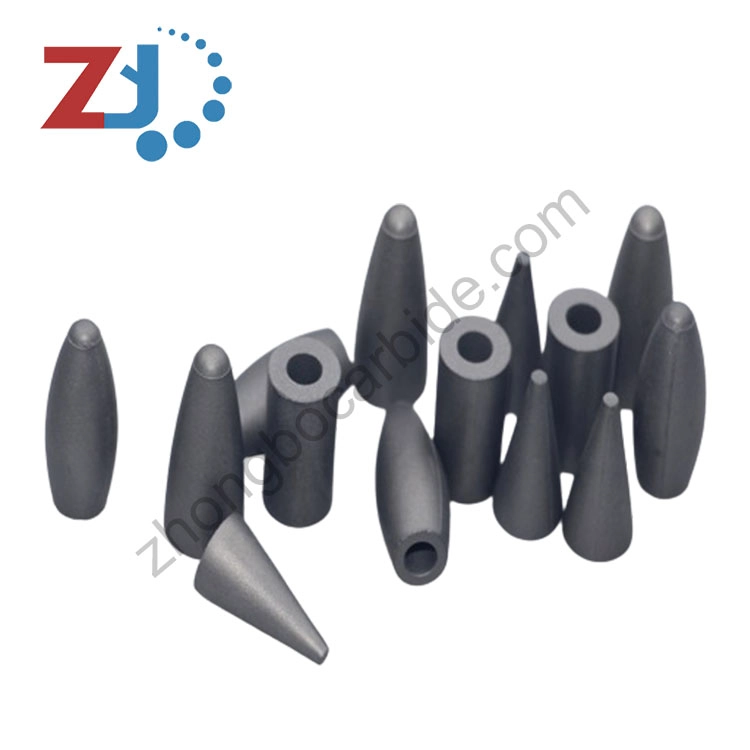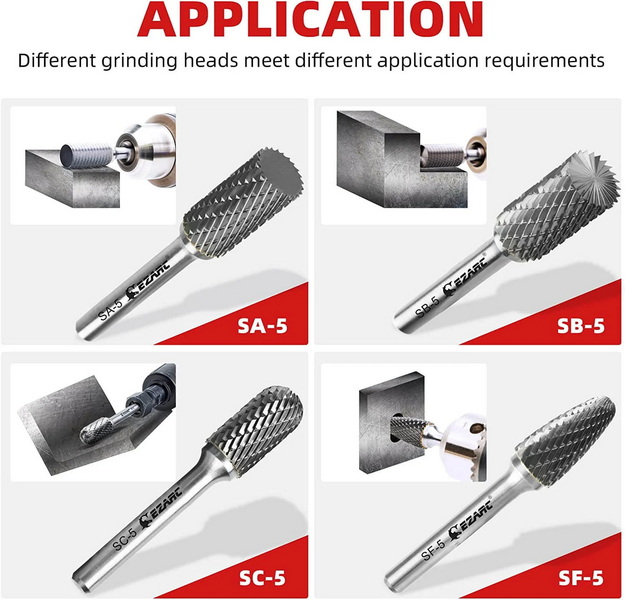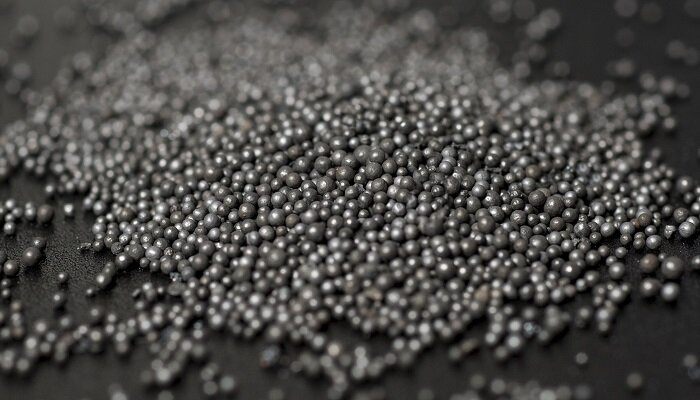Content Menu
● What is Tungsten Carbide?
>> Chemical Properties
>> Physical Properties
>> Hardness and Composition
● The Breakability Factor
>> Lack of Malleability
>> High-Compressive Strength
>> Comparing Tungsten Carbide with Other Materials
● Factors Influencing Tungsten Carbide's Susceptibility to Shattering
>> Composition and Grain Size
>> Presence of Binders
>> Manufacturing Process
>> Environmental Conditions
>> Application-Specific Stresses
● Advantages of Tungsten Carbide
>> Wear Resistance
>> High-Temperature Performance
>> Edge Retention
● Applications of Tungsten Carbide
>> Cutting Tools
>> Wear Parts
>> Jewelry
● Mitigation Strategies to Prevent Shattering
>> Material Selection
>> Design Optimization
>> Manufacturing Process Control
>> Protective Coatings
>> Regular Inspection and Maintenance
● Conclusion
● FAQ
>> 1. What makes tungsten carbide so hard?
>> 2. Is tungsten carbide always brittle?
>> 3. How does temperature affect tungsten carbide?
>> 4. Can tungsten carbide be repaired if it cracks?
>> 5. What are the alternatives to tungsten carbide?
● Citations:
Tungsten carbide is a compound celebrated for its exceptional hardness, wear resistance, and thermal properties, making it essential for various industrial applications[4]. It is formed by combining tungsten and carbon atoms in equal parts[2][5][6]. While its hardness is a significant advantage, the question of whether tungsten carbide shatters easily is crucial for engineers, manufacturers, and consumers alike[3][7].

What is Tungsten Carbide?
Tungsten carbide (WC) is an inorganic chemical compound consisting of equal parts of tungsten and carbon atoms[5]. Often referred to as tungsten monocarbide, it stands out as the most crucial and extensively utilized carbide of tungsten[5]. Tungsten carbide is typically manufactured as an ultra-fine ceramic powder that is then agglomerated or fused with a metallic binder – cobalt, cobalt chromium or nickel – to provide the hard ceramic with ductility and resilience[4].
Chemical Properties
There exist two well-characterized compounds of tungsten and carbon: tungsten carbide (WC) and tungsten semicarbide (W2C)[2]. Both compounds may be present in coatings, with their proportions varying depending on the coating method[2]. At high temperatures, WC decomposes into tungsten and carbon, a phenomenon that can occur during high-temperature thermal spraying processes like high-velocity oxygen fuel (HVOF) and high-energy plasma (HEP) methods[2]. Oxidation of WC begins at 500–600 °C (773–873 K)[2]. It demonstrates resistance to acids, being attacked only by hydrofluoric acid/nitric acid (HF/HNO3) mixtures above room temperature[2]. It reacts with fluorine gas at room temperature and chlorine above 400 °C (673 K) and is unreactive to dry H2 up to its melting point[2]. Finely powdered WC oxidizes readily in hydrogen peroxide aqueous solutions[2].
Physical Properties
Tungsten carbide boasts a high melting point of 2,870 °C (3,140 K), and a boiling point of 6,000 °C (6,270 K) under a pressure of 1 standard atmosphere (101.325 kilopascals)[2]. It has a thermal conductivity of 110 W/m·K, and a coefficient of thermal expansion of 5.5 μm/m·K[2].
Tungsten carbide is known for its extreme hardness, ranking between 9.0 and 9.5 on the Mohs scale, and has a Vickers number of around 2600[2]. Its Young's modulus is approximately 530–700 GPa, a bulk modulus of 379–381 GPa, and a shear modulus of 274 GPa[2]. It features an ultimate tensile strength of 344 MPa, an ultimate compression strength of about 2.7 GPa and a Poisson's ratio of 0.31[2]. The speed of sound through a thin rod of tungsten carbide is 6220 m/s[2].
Hardness and Composition
Tungsten carbide (WC) consists of tungsten and carbon atoms arranged in a hexagonal crystal structure[4]. The most common form used in industrial applications contains approximately 94% tungsten and 6% carbon by weight[4]. This composition can be modified by adding binding materials, typically cobalt or nickel, to enhance certain properties[4]. The resulting cermet (ceramic-metallic composite) combines the high hardness of ceramic tungsten carbide with the toughness of metallic binders[4].
The Breakability Factor
The breakability of tungsten carbide rings stems from the material's intrinsic physical properties[1]. While tungsten carbide is known for its extreme hardness and resistance to scratching, this rigidity makes it more susceptible to breaking under specific conditions[1][3]. Unlike softer metals that can bend and deform under pressure, tungsten carbide's structure cannot absorb impact through bending[1][3]. Instead, when subjected to a sharp blow or extreme pressure, it is liable to crack or shatter[1].
Lack of Malleability
Tungsten carbide rings are not malleable, meaning they cannot be easily bent or reshaped without damage[3]. Precious metals are quite malleable, but even high-quality tungsten rings are not[3]. This lack of malleability means that they are more prone to shattering[3]. The ability to bend protects certain metals from shattering, so since tungsten carbide rings cannot do this they are more likely to shatter[3].
High-Compressive Strength
Compressive strength refers to the ability to withstand crushing[3]. Brittle metals often resist compression[3]. Because tungsten carbide rings resist compression they are brittle[3].
Comparing Tungsten Carbide with Other Materials
| Property | Tungsten Carbide | Steel |
| Young's Modulus | 550 GPa | ~200 GPa |
| Hardness (Mohs) | ~9 | ~6-6.5 |
| Density (g/cm³) | ~15.6 | ~7.8 |
| Melting Point (°C) | 2,870 | ~1,375 |
Factors Influencing Tungsten Carbide's Susceptibility to Shattering
Several factors determine how easily tungsten carbide can shatter:
Composition and Grain Size
The composition of tungsten carbide, specifically the percentage of carbon and the presence of binding materials like cobalt or nickel, plays a crucial role[4][5]. Finer grain sizes and uniform distribution of the carbide phase enhance toughness, while higher binder content can improve ductility but may reduce hardness[4][5].
Presence of Binders
While pure tungsten carbide has excellent hardness, it is brittle and prone to shattering, especially under impact[5]. To improve its toughness and durability, tungsten carbide powders are mixed with metallic binders before being sintered into solid parts[5].
1.Cobalt (Co)
Cobalt is the most widely used binder for tungsten carbide[5]. Cobalt-bonded tungsten carbide, often referred to simply as carbide, is the industry standard for cutting tools and wear parts[5]. The cobalt content typically ranges from 3% to 30% by weight, with higher cobalt proportions providing increased toughness at the expense of some hardness and wear resistance[5]. Cobalt has excellent wetting and adhesion properties with tungsten carbide, allowing for the production of highly dense, void-free sintered parts[5].
2.Nickel (Ni)
Nickel can serve as an alternative binder to cobalt in tungsten carbide composites[5]. Compared to cobalt, nickel binders result in better corrosion resistance and improved chemical stability, particularly against acidic environments[5]. However, nickel-bonded carbides have lower hardness and wear resistance ratings[5]. Nickel is sometimes used in conjunction with cobalt to fine-tune the properties of the tungsten carbide composite[5].
3.Other Binders
Other metals, such as chromium and iron, are less commonly used as sole binders but can be combined with cobalt or nickel to impart specific properties[5]:
- Chromium enhances the corrosion and oxidation resistance of the tungsten carbide composite. It is often used in combination with nickel binders[5].
- Iron can serve as an economical alternative or addition to cobalt binders. Ferro-tungsten carbide has lower hardness but higher toughness compared to cobalt-bonded grades[5].
Manufacturing Process
The method used to manufacture tungsten carbide parts significantly affects their resistance to shattering[4]. Processes like sintering, hot pressing, and thermal spraying can introduce defects or residual stresses that compromise the material's integrity[7]. Proper control of temperature, pressure, and atmosphere during manufacturing is essential to minimize these issues[7].
Environmental Conditions
Extreme temperatures, corrosive substances, and high-impact environments can all contribute to the failure of tungsten carbide components[2][7]. High temperatures can reduce the material's hardness and strength, while corrosive substances can degrade the binder phase, leading to cracking and eventual shattering[2].
Application-Specific Stresses
The type and magnitude of stress applied to tungsten carbide in its intended application are critical factors[7]. Compressive stresses are generally well-tolerated, but tensile and shear stresses can initiate cracks, especially in components with sharp corners or other stress concentrators[3].

Advantages of Tungsten Carbide
Despite its susceptibility to shattering under certain conditions, tungsten carbide offers numerous advantages[4]:
Wear Resistance
Tungsten carbide's high resistance to wear and corrosion is one of its standout features[4][7]. It can endure prolonged exposure to abrasive environments without significant degradation, making it ideal for industries where equipment is subject to constant friction and contact with corrosive substances[7]. Although more expensive initially, tungsten carbide saves money over time due to its durability and reduced need for maintenance[7]. The extended lifespan of tools and components translates to cost savings and increased operational efficiency[7].
High-Temperature Performance
Tungsten carbide can perform well even in very high temperatures, maintaining its hardness and strength[7]. It has a melting point exceeding 2,870°C (5,200°F), allowing it to retain its structural integrity at elevated temperatures[2][6][7]. This is crucial for applications such as cutting and drilling, where tools often encounter high heat due to friction[7]. Tungsten carbide's thermal stability ensures consistent performance and reduces the risk of tool failure during demanding tasks[7].
Edge Retention
Tungsten carbide tools stay sharp longer, leading to cleaner cuts and more efficient operations[7]. When used as a coating material, tungsten carbide offers high bond strength and low residual stress, particularly when applied using the High-Velocity Oxy Fuel (HVOF) thermal spray process[7]. This process results in dense, cohesive coatings with minimal porosity, enhancing the overall wear resistance and durability of the coated components[7]. These properties make tungsten carbide coatings ideal for applications requiring robust and reliable surface protection[7].
Applications of Tungsten Carbide
Tungsten carbide is used across various industries due to its unique properties[4]:
Cutting Tools
Tungsten carbide is extensively used in cutting tools for machining, drilling, and milling[5][7]. Its hardness and wear resistance ensure that these tools maintain a sharp edge, even at high speeds and temperatures[7].
Wear Parts
Components made from tungsten carbide are employed in applications where resistance to abrasion and erosion is critical[4]. Examples include nozzles, bearings, and pump components used in the oil and gas, mining, and chemical industries[4].
Jewelry
Tungsten carbide has become a popular material for rings and other jewelry items due to its scratch resistance and durability[1][3]. While it can shatter under significant impact, its hardness ensures it remains free from scratches under normal wear[1].
Mitigation Strategies to Prevent Shattering
To prevent tungsten carbide components from shattering, several strategies can be employed:
Material Selection
Choosing the appropriate grade of tungsten carbide for a specific application is crucial[4][5]. Factors to consider include the binder content, grain size, and the presence of other alloying elements[4].
Design Optimization
Designing components with rounded corners and smooth transitions can reduce stress concentrations, minimizing the risk of crack initiation[3]. Avoiding sharp edges and abrupt changes in geometry is essential[3].
Manufacturing Process Control
Implementing strict controls during the manufacturing process can minimize defects and residual stresses[4]. This includes careful monitoring of temperature, pressure, and atmosphere during sintering and other fabrication steps[7].
Protective Coatings
Applying protective coatings, such as diamond-like carbon (DLC) or ceramic coatings, can enhance the surface hardness and wear resistance of tungsten carbide components, providing an additional layer of protection against shattering[4][7].
Regular Inspection and Maintenance
Regularly inspecting tungsten carbide components for signs of wear, cracks, or other damage can help identify potential problems before they lead to catastrophic failure. Implementing a proactive maintenance program can extend the lifespan of these components and prevent unexpected downtime[7].
Conclusion
In conclusion, while tungsten carbide is exceptionally hard and wear-resistant, it is also susceptible to shattering under specific conditions[1][3]. Its lack of malleability and high compressive strength mean that sharp blows or extreme pressure can cause it to crack or shatter[1][3]. Factors such as composition, manufacturing process, environmental conditions, and application-specific stresses all play a role in determining its breakability[4][7].
Despite this limitation, the advantages of tungsten carbide, including its wear resistance, high-temperature performance, and edge retention, make it indispensable in many industries[7]. By understanding the factors that contribute to shattering and implementing appropriate mitigation strategies, engineers and manufacturers can maximize the lifespan and reliability of tungsten carbide components[4]. Regular inspection, careful material selection, design optimization, and controlled manufacturing processes are all essential to preventing failures and ensuring optimal performance[7].

FAQ
1. What makes tungsten carbide so hard?
Tungsten carbide's hardness comes from the strong covalent bonds between tungsten and carbon atoms in its hexagonal crystal structure[4][5]. This structure provides exceptional resistance to deformation and wear[4].
2. Is tungsten carbide always brittle?
While tungsten carbide is inherently brittle, its toughness can be improved by adding metallic binders like cobalt or nickel[5]. The binder content and grain size influence the material's overall brittleness[5].
3. How does temperature affect tungsten carbide?
Tungsten carbide maintains its hardness and strength at high temperatures, with a melting point of 2,870°C (5,200°F)[2][6][7]. However, extreme temperatures can reduce its overall strength and increase its susceptibility to oxidation[2].
4. Can tungsten carbide be repaired if it cracks?
Repairing cracked tungsten carbide is challenging due to its hardness and brittleness[3]. Specialized techniques like brazing or adhesive bonding can be used in some cases, but the repaired component may not have the same strength and durability as the original[3].
5. What are the alternatives to tungsten carbide?
Alternatives to tungsten carbide include high-speed steel, ceramics, and diamond coatings[5]. The choice of material depends on the specific application requirements, including hardness, wear resistance, and cost[5].
Citations:
[1] https://redwoodrings.com/blogs/redwood-rings-blog/tungsten-ring-break
[2] https://en.wikipedia.org/wiki/Tungsten_carbide
[3] https://www.iconicjewelry.com/tungsten-rings-does-tungsten-shatter/
[4] https://www.linde-amt.com/resource-library/articles/tungsten-carbide
[5] https://cowseal.com/tungsten-vs-tungsten-carbide/
[6] https://www.vedantu.com/chemistry/tungsten-carbide
[7] https://shop.machinemfg.com/the-pros-and-cons-of-tungsten-carbide-a-comprehensive-guide/
[8] http://www.tungsten-carbide.com.cn
















